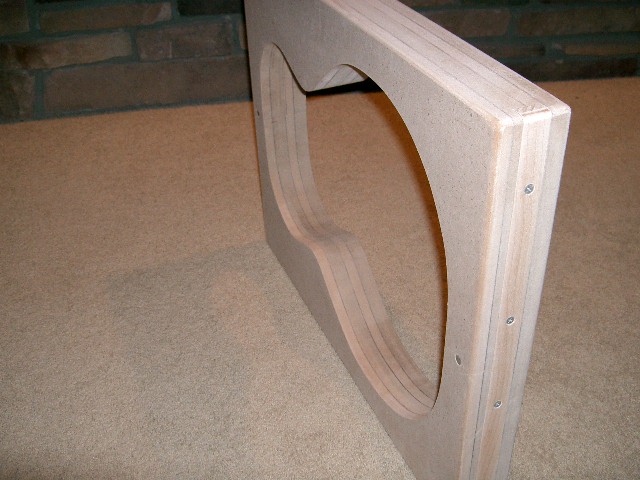I've had a heck of a time creating my outside mold. Bandsaw troubles mainly. But anyway. I've done what I can with what I have. That leads me to the question "Is it enough?" Obviously, I'm no expert in luthiery. It looks like the mold is too rough. I've done my best to sand it, but I don't have a spindle sander as you see in the pics. How smooth and even does the mold need to be? Will the side contain dents and stuff if the mold does? It's really wavy to the touch. Yeah, I know it's a noob question :) pics follow



 .
.
